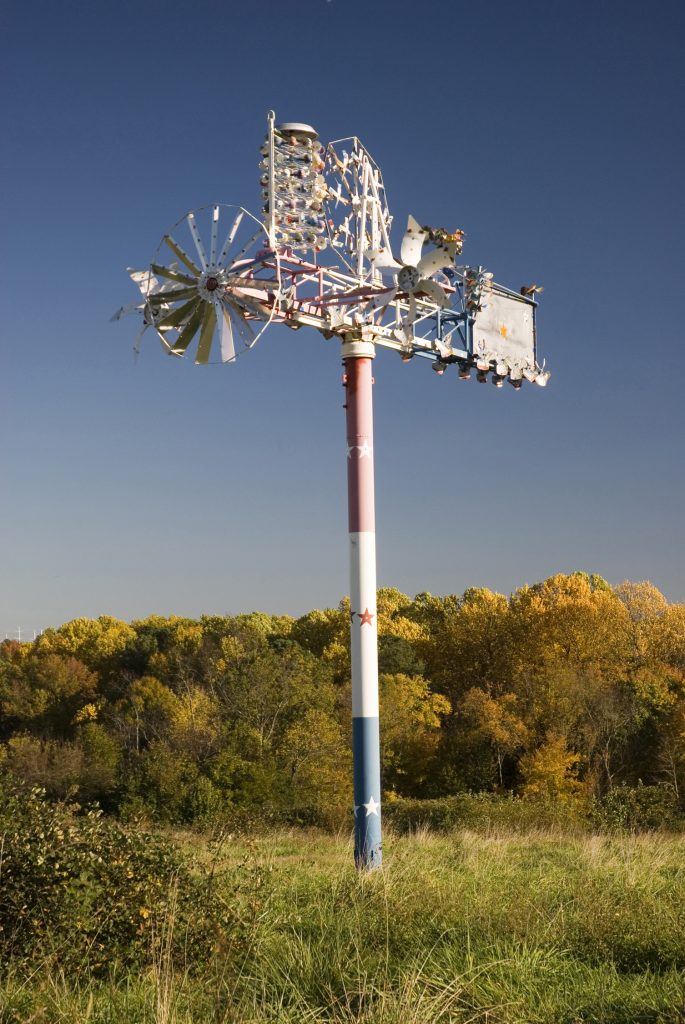Wind Machine (work of art)
Artwork Info
Key Ideas
- This is a 30-foot-tall kinetic (moving) sculpture. It is made up of many salvaged metal pieces, like bicycle wheels and machine parts, that move when the wind blows.
- Vollis Simpson was a self-taught folk artist from North Carolina. He created large kinetic sculptures that he called “wind machines” and “whirligigs.”
- Simpson began building wind machines when he was stationed in the South Pacific during World War II. He later used his machine-building skills to create art from metal scraps.
- Simpson’s whirligigs are the official folk art of North Carolina.
Learn More
Wind Machine is a kinetic sculpture. It uses movement for artistic effect. This work of art was commissioned and installed in 2002, just before the Museum Park opened in 2003. The sculpture is made from various recycled metal parts, including fan blades, bicycle rims, and industrial truck parts. It includes metal pinwheels and a machine part that resembles a Ferris wheel. The heavy material of the pieces contrasts with the playfulness of the sculpture’s movement in the wind.
Vollis Simpson was a self-taught folk artist and a lifelong machinist. He was 83 years old when he created Wind Machine for the NCMA. Simpson was born and raised in Wilson County, North Carolina. He first began building small wind machines when he was stationed in Saipan during World War II. After the war he built several large windmills, including one that powered the heating system in his house. He also ran a machine repair shop and built equipment that was used to move houses. In 1985 he retired and began making whimsical, spinning sculptures out of discarded vehicle parts, streetlights, and other metal objects.
Eventually a variety of Simpson’s one-of-a-kind windmills decorated his brother’s farm in Lucama, North Carolina. Locals discovered the art, and Simpson’s sculptures became a tourist destination. In 2013 his “whirligigs” were named North Carolina’s official folk art. Today the Vollis Simpson Whirligig Park in downtown Wilson displays and preserves the artist’s collection of 30 wind machines.
tags: STEAM, force, movement, part/whole, play, power, reuse, environment, physics, engineering, whirligig
Additional Resources
Resources for Teachers
- Try an activity that uses recycled materials to create art.
- Read an article about the artist.
- Read a short article about folk art.
- View other examples of kinetic sculpture.
Resources for Students
- Watch a video about the artist.
- Watch a video of the installation of Simpson’s work.
- Read an article about the Vollis Simpson Whirligig Park in Wilson, North Carolina.

